Reimagining Park Promotion: How a Top Chinese SOE Uses VR to Drive Investment
In recent years, the rise of the “New Industrial City” concept has drawn a diverse range of investors into China’s park development sector—including real estate developers, state-owned enterprises (SOEs), and urban investment platforms. As project formats grow increasingly complex and competition among industrial parks intensifies, developers are facing greater challenges in project positioning and investment attraction. To stand out, they must go beyond functional integration of urban and industrial elements, and deliver more engaging, personalized marketing experiences.
One of the top SOEs in China, China Communications Construction Group (CCCC), approached us. Their latest project, CCCC Future Innovation City, is a representative TOD (Transit-Oriented Development) located in the high-speed rail hub zone of Xiong’an New Area. With a total GFA exceeding 1 million square meters, the development includes approximately 350,000 sqm of industrial office space, 130,000 sqm of commercial amenities, 400,000 sqm of residential units, and 38,000 sqm of serviced apartments. While this mixed-use format gives the project tremendous growth potential, it also presents significant planning and development challenges.
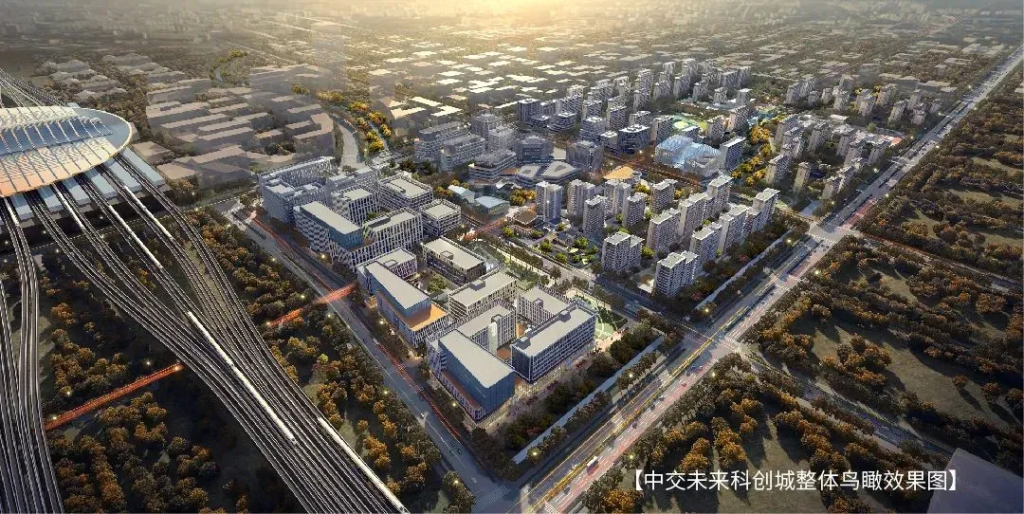
The project faces three core challenges: First, achieving seamless integration of diverse functions and effectively managing the relationship between different user groups—overcoming the low level of interaction often seen in traditional developments where residential and industrial areas are planned separately. Second, optimizing the complex traffic circulation around the high-speed railway station to ensure smooth connectivity between the project and the transport hub. Third, balancing held and for-sale assets to avoid the disconnect that often occurs between residential and industrial zones once housing units are sold out.
Strategic Five-in-One Framework: Enabling Deep Industrial-Urban Integration
To address these challenges, CCCC Future Innovation City has introduced a “Five-in-One” design framework that integrates industrial, urban, and transit-oriented functions into a cohesive system. Through an open spatial layout, the project enables the organic integration of diverse functional zones and creates a comprehensive urban-industrial ecosystem.
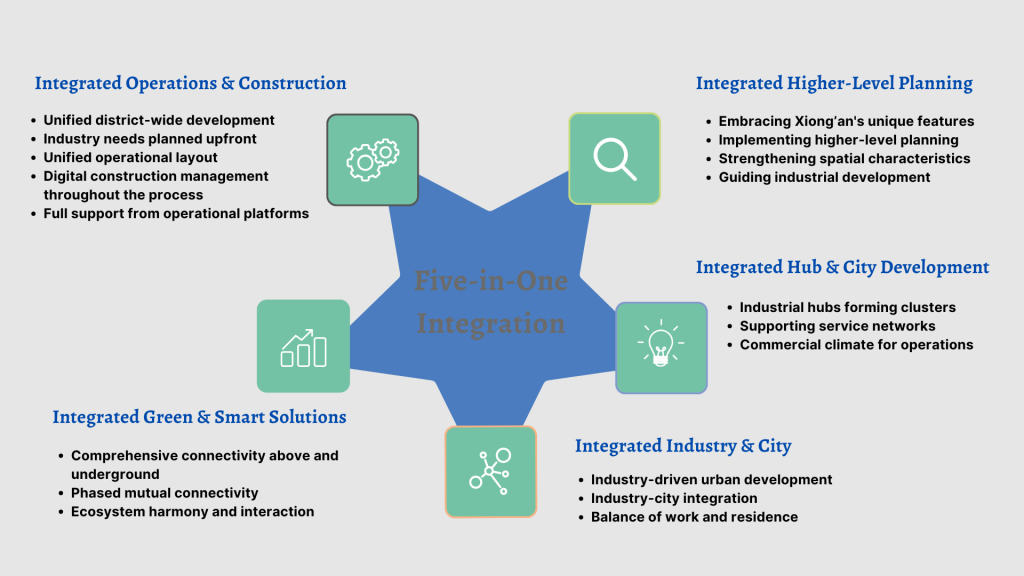
The industrial and residential zones serve as the two core areas, each meeting the distinct needs of work and living. They are connected by a vibrant lifestyle axis and a green leisure corridor, combining above-ground and underground spaces with urban amenities to achieve full integration of industry, city, and transportation.
The project also features five major industrial clusters: headquarters offices, a core innovation hub, tech service areas, R&D support zones, and industrial capacity zones—forming a diversified industrial ecosystem. In terms of traffic organization, the design is aligned with the layout of the Xiong’an high-speed railway station, incorporating a B1-level pedestrian-vehicle separation system to enable seamless connection between the station and the development, significantly improving circulation efficiency.
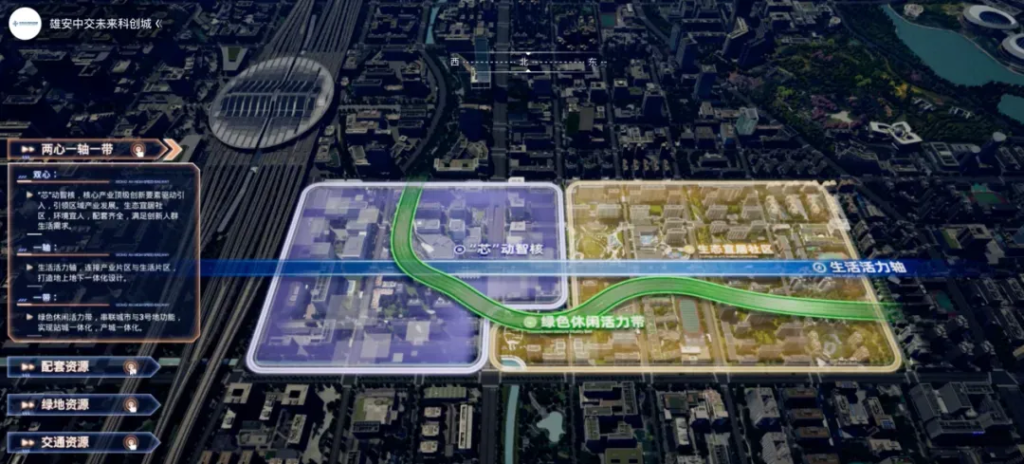
Green Intelligence and VR Technology: Enhancing Operational Efficiency
To enhance overall operational efficiency, China Communications Construction Group (CCCC) has actively adopted the MytePro Virtual Tour System, leveraging digital tools to enable intelligent park management. The CIM system plays a critical role not only in brand promotion, project showcasing, and investment attraction, but also in addressing the core challenges of information delivery and visualization in complex developments.
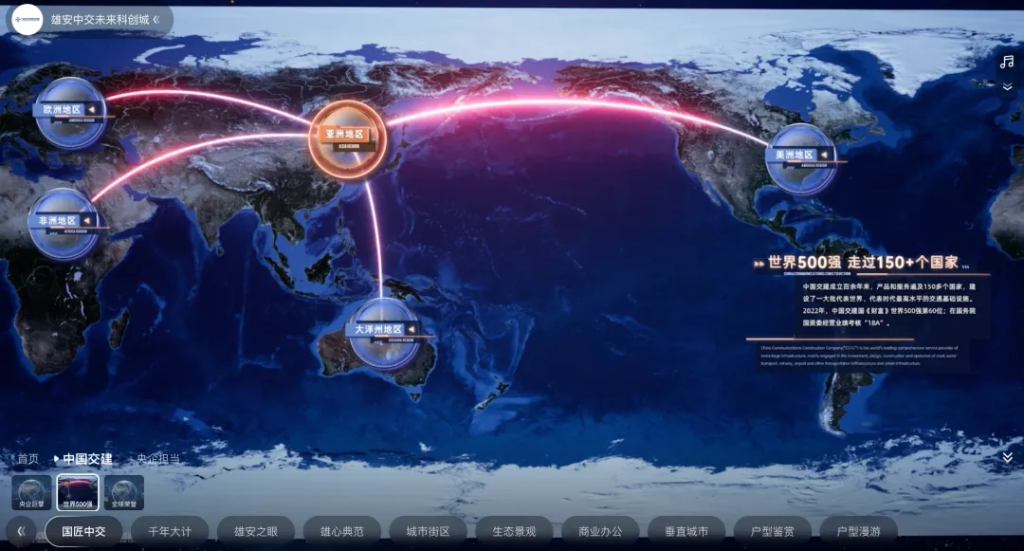
The system optimizes project marketing and management through three key solutions:
1. Three-Dimensional, Intuitive Information Presentation
The project’s significant scale and complexity, coupled with numerous product types, require advanced presentation methods. Through multi-layered scripting and adaptable applications, the system integrates branding, planning, and product display into a single platform, utilizing dynamic animations and perspective shifts to provide clients with a clear vision of the project’s completion.
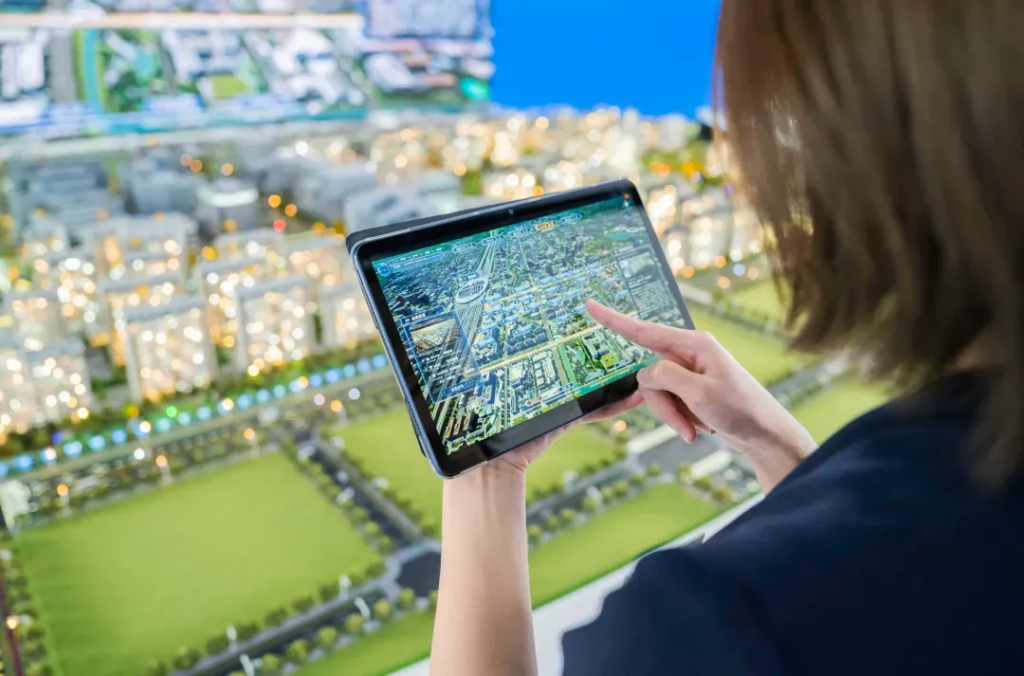
2. Enhanced Customer Experience through Realistic Presentation
With increasing focus on delivery quality, particularly in large complexes, clients demand higher standards for urban amenities, traffic flow, and overall environment. VR tour capability provides an immersive, near-real experience, allowing clients to explore amenities, internal layouts, and traffic arrangements, creating a “what-you-see-is-what-you-get” effect that boosts client confidence.
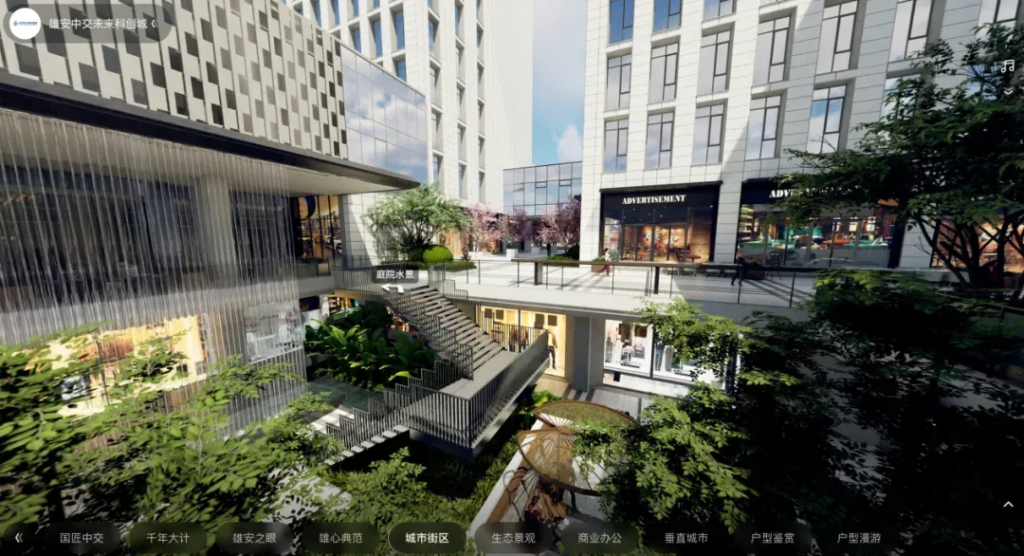
3. Visualization of Core Project Highlights
The TOD urban-station integration in Future Science and Technology City is a key highlight that traditional physical models cannot fully showcase. MytePro’s digital twin technology, coupled with 3D animation, intuitively demonstrates the connection between station and project, allowing clients to understand its functionality. Additionally, the project includes a driverless shuttle loop, which CIM’s visual tools clearly convey, enhancing client understanding and project appeal.
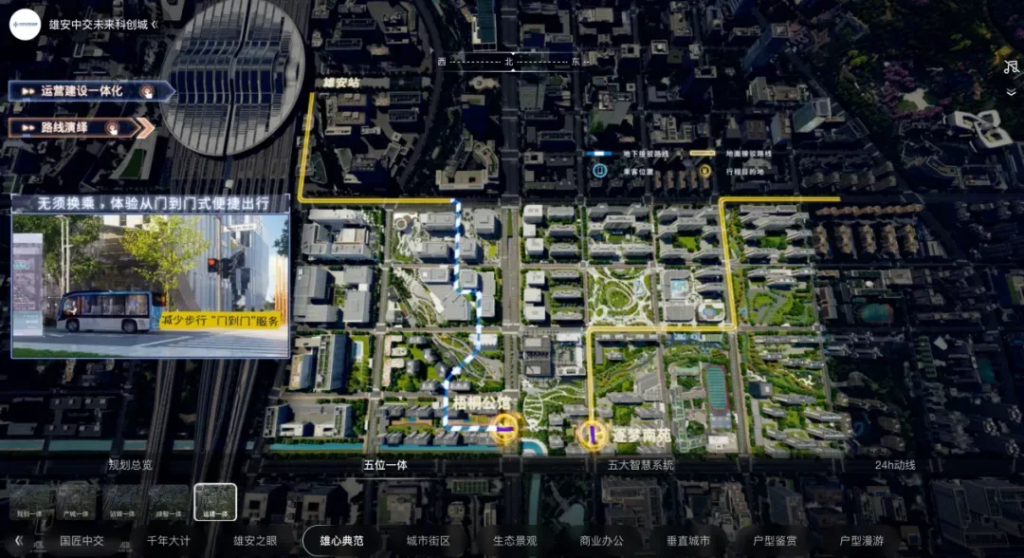
Conclusion
As Southeast Asia’s real estate market rapidly evolves, competition in park development has become increasingly fierce, making improvements in refined management and expertise crucial for corporate success. Future Science and Technology City’s achievements in urban-industrial integration and digital investment attraction set a new benchmark for developers in both China and Southeast Asia. Its digital management model and systematic urban-industrial planning concept not only enhance the project’s competitive edge but also provide valuable insights into sustainable growth for regional peers.
